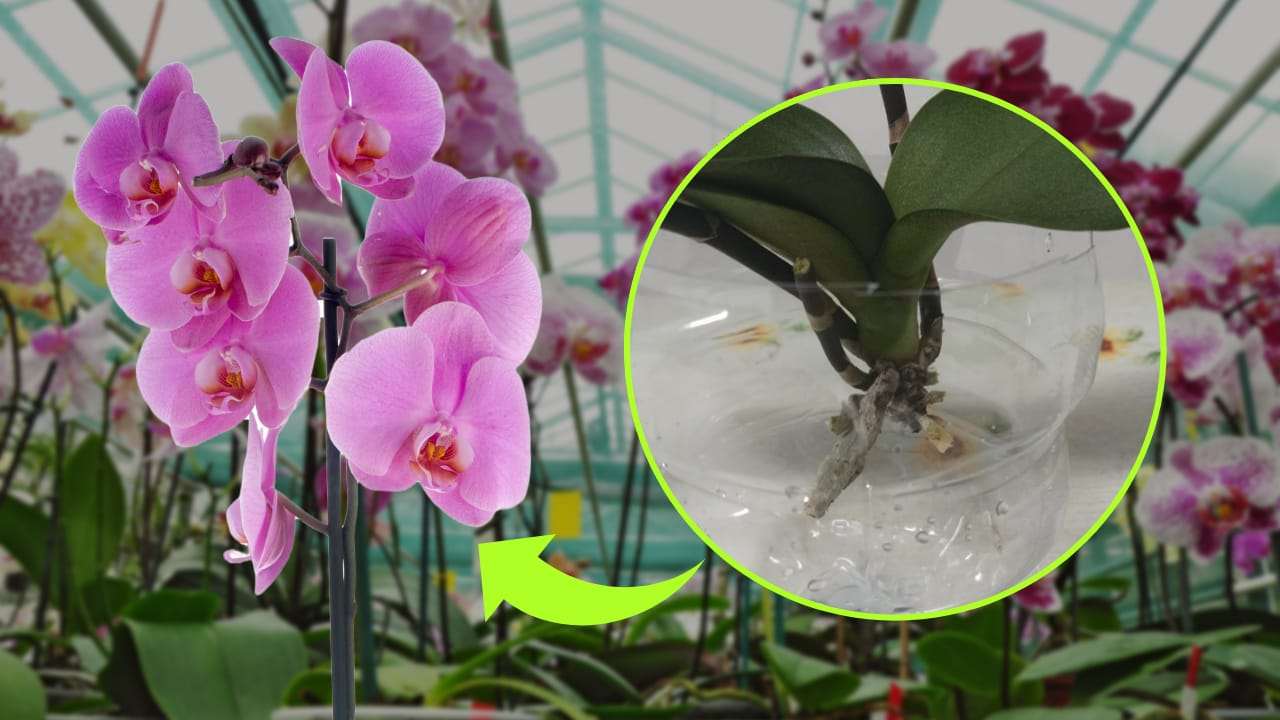Reviving orchids without roots is very simple. It only takes a few steps, here’s how.

Orchids are very particular plants and are particular for their blooms. Until a few decades ago it was an elite plant since it had to be kept at high temperatures and humidity. Over the years, many varieties have spread that easily adapt to colder European climates. Today, in fact, they are popular plants and easily spread in the home or garden.
Its origins are Asian and there are around 20,000 different species of orchids. And 650 different genres. Each variety has its own characteristics and specific needs. However, the basic rule to prevent an orchid from dying is not to expose it directly to sunlight. In fact, exposure to light must be filtered otherwise flowers and leaves could burn.

Then the orchid should not be watered too much. It is in fact a plant that should not be drunk every day but approximately every 5/12 days (slightly more often in the warmer season). However, when you see that the orchids are starting to weaken, you need to intervene immediately.
How to revitalize an orchid with dead roots
Often the weakening of orchids starts from the roots . These must then be strengthened to bring the orchid back to life. The first thing to do if the problem lies in the roots is to take scissors and cut all those that are damaged.
After having done this operation you need to take a pot with good drainage and some gravel. The latter positioned at the bottom of the vase will help excess water flow better into the saucer.

Then to bring the orchid back to life but above all the roots there is the addition of a secret but very easy to find ingredient. It’s sand that you pour a little into the vase . What you will need to do with the help of your fingers are small holes where you will insert the roots of the orchid.
Now just water the plant after placing it in the saucer which will collect the excess water. At that point it is good to put the plant in a sunny but ventilated place. You will realize that the roots have grown when the plant appears to have recovered and will flower again.
At that point it is time to transplant the orchid. You will need to gently take the orchid out of the pot and clean the roots well. Then place it in a new pot where stones have been placed at the bottom for drainage. And now the orchid is reborn with a few simple steps.
Tips for caring for orchids
Here are some tips for best caring for orchids . As we have already said, exposure to sunlight is very important. There are temperatures in which the orchid should stay: during the day they range from 20° to 22° and at night it must not drop below 16°.
You’ll know your plant is getting too much sun when the leaves start to yellow. Then it is best to move the plant to a windowsill facing north. However, the opposite could also happen, i.e. a lack of light and in that case the backgrounds will tend to be darker, in this case change the location and put it in a sunnier one without the direct rays of the sun.

While when it comes to watering the orchid does not need much water. The advice is to water it at the beginning of the day by immersing the pot in a basin of water for 5/10 minutes , preferably rainy since the water from the tap contains limestone.
Then it is important that the plant has the right soil and there is a specific one for orchids that is sold in nurseries or garden centers. Finally, fertilize the orchid from March to October approximately twice a month.






